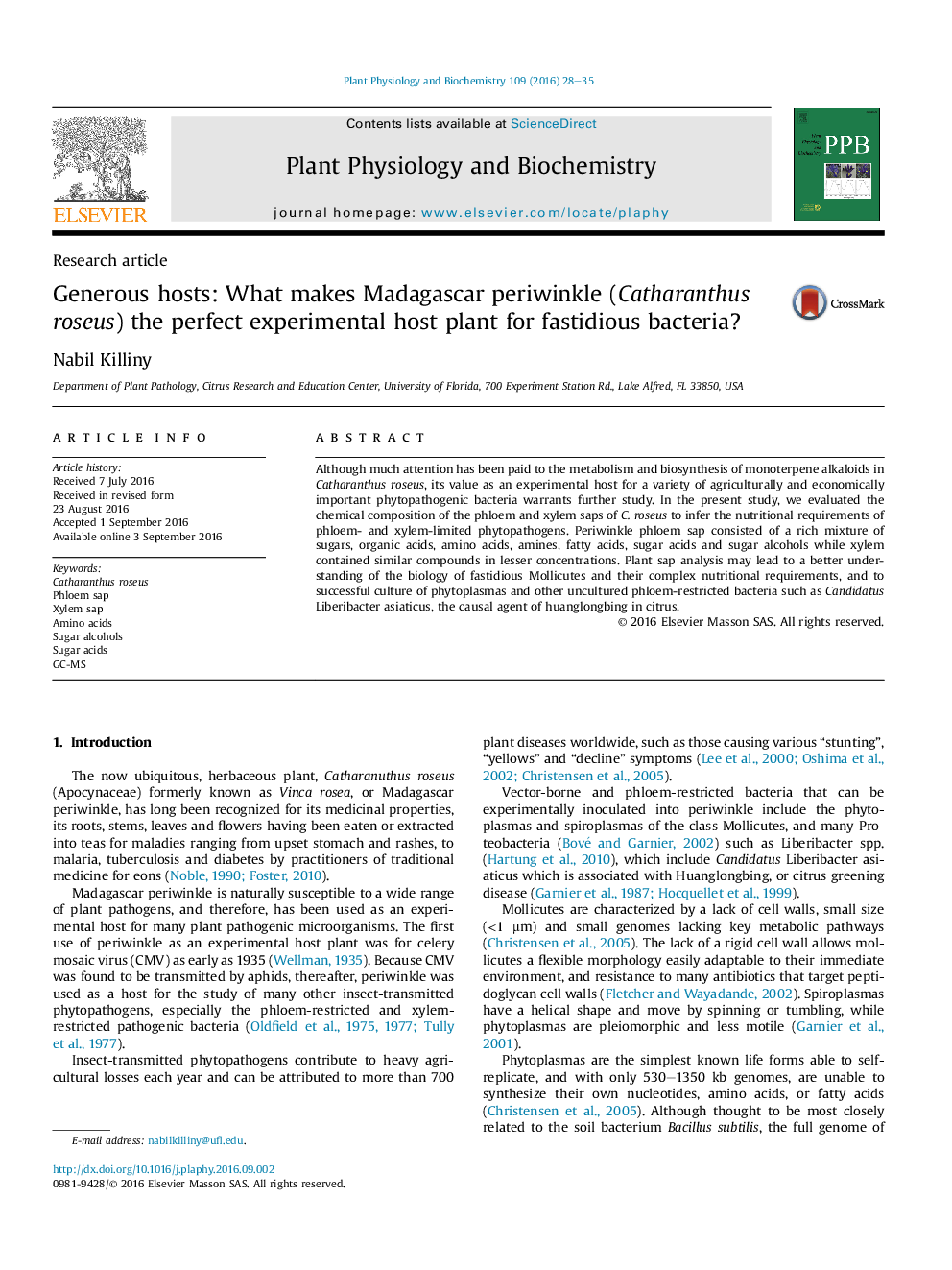| Article ID | Journal | Published Year | Pages | File Type |
|---|---|---|---|---|
| 5515619 | Plant Physiology and Biochemistry | 2016 | 8 Pages |
â¢The question, why Madagascar periwinkle Catharanthus roseus is a suitable host for uncultivable bacteria was addressed.â¢The chemical composition of phloem and xylem sap of Madagascar periwinkle was achieved using GC-MS.â¢Phloem sap was much richer in nutrients than xylem sap.â¢Sixty-three and twenty compounds were detected in phloem and xylem sap, respectively.â¢Saps contain organic compounds that are required for the growth of bacteria.
Although much attention has been paid to the metabolism and biosynthesis of monoterpene alkaloids in Catharanthus roseus, its value as an experimental host for a variety of agriculturally and economically important phytopathogenic bacteria warrants further study. In the present study, we evaluated the chemical composition of the phloem and xylem saps of C. roseus to infer the nutritional requirements of phloem- and xylem-limited phytopathogens. Periwinkle phloem sap consisted of a rich mixture of sugars, organic acids, amino acids, amines, fatty acids, sugar acids and sugar alcohols while xylem contained similar compounds in lesser concentrations. Plant sap analysis may lead to a better understanding of the biology of fastidious Mollicutes and their complex nutritional requirements, and to successful culture of phytoplasmas and other uncultured phloem-restricted bacteria such as Candidatus Liberibacter asiaticus, the causal agent of huanglongbing in citrus.
